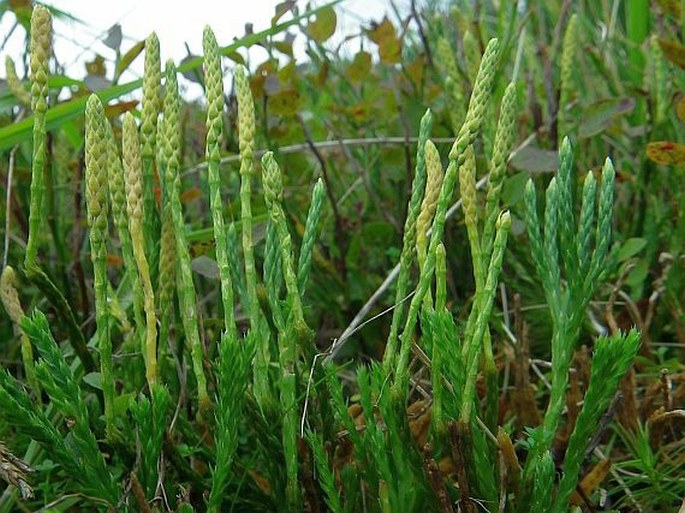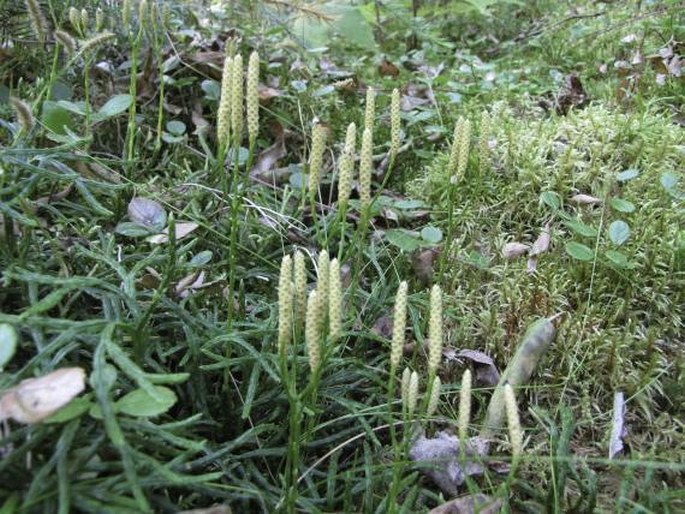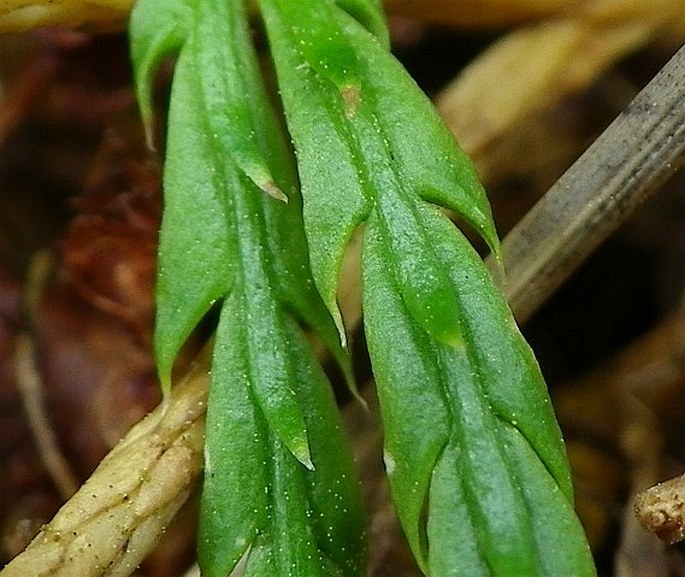Syn.: Lycopodium complanatum L., Lycopodium anceps Wallr., Stachygynandrum complanatum (L.) C. Presl, Lycopodium complanatum var. anceps (Wallr.) Aschers., Lycopodium complanatum subsp. anceps (Wallr.) A. et Gr., Lycopodium complanatum subsp. genuinum Čelak., Diphasium complanatum (L.) Rothm., Diphasium complanatum subsp. anceps (Wallr.) Dostál, Diphasium wallrothii H. P. Fuchs
Family: Lycopodiaceae P. B.

Distribution: Circumpolar species from cooler areas of the northern hemisphere – northern, central and eastern Europe, eastern Asia (from southern China to Japan and Sakhalin) and North America (from Alaska and southwest Greenland across all of Canada to northern New England, Michigan and Washington).
Ecology: Wet to dry forests, in association with mosses and ferns, at elevations up to 2300 m.

Description: Perennial, evergreen clubmoss with trailing stems, cca 2 mm thick, either on surface or shallowly buried. Erect shoots 10–40 cm tall, irregularly branched up to 5 times, leaves narrowly lanceolate with pointed tips. Branchlets flat in cross section, leaves 4-ranked, green to yellowish green, one side sometimes darker than the other, sessile, narrowly lanceolate, 3–7 × 1–2 mm. Strobili terminal, on short peduncle, 2–4 in number, about 25 mm long, apex blunt, sterile tip absent; sporophylls deltate to cordate, 2–3 mm long. Spores ripen from July to September.
Threat and protection: Endangered or protected species in many countries (for example Czechia, Hungary, Slovakia, Ukraine, New York).



These images were taken by Tomáš Mrázek in Czechia, Krkonoše (September 10, 2010), and by Karel Bergmann in Canada, British Columbia, Burton (September 11, 2011).


